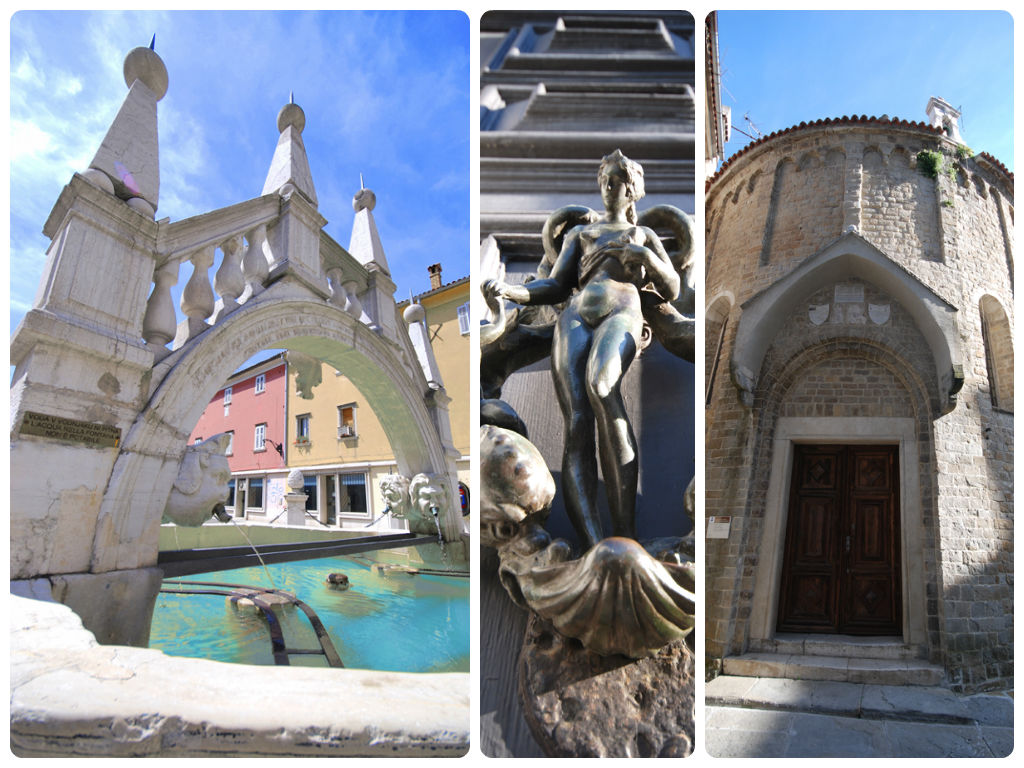Koper, a Town of History, Culture and Tradition
The history of Koper dates all the way back to the Bronze Age – the rocky island was first settled in the middle of the 2nd millennium BCE. Thanks to a mild climate and fertile soil, a variety of activities soon developed in the area, fostering the flourishing of agriculture, crafts and trade. Throughout its history, Koper changed hands a number of times and was ruled by Romans, the Byzantine Empire and the Franks, until it was taken over by the Republic of Venice. The mighty Venetians ruled over this territory for a total of five centuries (from the 13th to the 18th century), leaving an indelible mark on the town’s architecture. This period saw an economic and cultural boom, the remains of which have been preserved until today. After the fall of the Venetians, the Slovenian Istria became a part of Napoleon’s Illyrian Provinces, later passing into the hands of Austria, Italy and Yugoslavia.
Pretorska palaca (Author - Ubald Trnkoczy)
Capris, Insula Capraria (“Goat Island”), Insula Capritana, Iustinopolis, Caput Histriae (“Head of Istria”) and Capo d'Istria – these are the many names this beautiful town has borne in various periods of its rich and colourful history.
Arriving in Koper today, visitors see a typical Mediterranean town, bordered on one side by the sea and on the other by rolling hills dotted with picturesque little villages. A walk through the streets and squares of the town centre uncovers its exciting history, while people who venture into the hinterland are met with countless opportunities for leisure activities and relaxation. Koper boasts a lively atmosphere all year round, but it gets particularly busy in summer. The town organises a range of now-traditional festivals and events that attract large numbers of visitors, who also delight in the pleasant Mediterranean climate and traditional Istrian cuisine. Koper has developed into a major centre of economy and tourism. For some years now, it has also been a university town.
Author - Ubald Trnkoczy
Town Sights
- The Praetorian Palace: Koper’s finest palace also serves as the town hall; it houses a restored apothecary collection, a wedding hall and the city council hall.
- The City Tower – Belfry: a majestic beauty spot that offers panoramic views of the whole Koper and Trieste Bay.
- The Cathedral of St. Mary of the Assumption: one of Slovenia’s largest churches, it houses an important painting by the Venetian artist Vittore Carpaccio – the oldest depiction of the former island town, Koper.
- Taverna: This erstwhile salt warehouse is now a popular event venue.
- Da Ponte Fountain: built in 1666, it was long used as a source of drinking water; today, it is one of the town’s most enchanting sights.
- The Muda Gate: the main gate of the former island town.
- Fontico: The oldest building on Brolo square, it was used in the past as a granary. It bears the oldest depiction of Koper’s coat-of-arms.
- The Koper Regional Museum: distinguished by over 100 years of tradition, the museum holds exhibits connected to the history and tradition of Koper and the local area. It is housed in the majestic Belgramoni-Tacco Palace, which also features a beautiful garden with a lapidarium.
- The Škocjanski zatok Nature Reserve: the largest brackish wetland in Slovenia is the natural habitat of countless bird species, indigenous boškarin cattle, Camargue horses and other animal and plant species.
- The Vinakoper Wine Cellar: the largest wine cellar in the Slovenian Istria, it boasts a number of prestigious titles won by its top quality wines, as well as the largest wine barrel in Europe.
.jpg)
Carpacciov trg (Author - Ubald Trnkoczy)
Events
Istrian Carnival
Carnival celebrations have a long tradition in the Slovenian Istria. In the old days, people in villages and towns alike dressed up in costumes to drive away winter – a custom that has survived until the present day. On Carnival Saturday, there is a parade with floats, music and costumed participants walking through Koper. For more information, visit
www.istrski-karneval.si.
All about Koper
The Municipality of Koper comprises a total of 23 local communities. Every year in May, they hold a fair in the town centre, showing their village customs, traditions and typical Istrian cuisine to visitors from near and far.
Refosco Festival
The Slovenian Istria is also known as the Land of Refosco. It is the home of an indigenous variety of grape, grown by winemakers throughout the region and used to make the characteristic Refosco wine. The Refosco Festival sees the producers of this popular wine come together in Marezige, where they hold a wine tasting and competition.
Sweet Istria
Slovenia’s largest festival of sweets and desserts, Sweet Istria is organised every year in the second half of September and never fails to attract countless visitors to Koper. The event comprises over 100 stands with participants from the Slovenian Istria, Slovenia and other countries offering more than 300 sweet products to visitors to taste and buy. For more information, visit
www.sladka-istra.si.
The Slovenian Istria Agriculture Days
The Slovenian Istria Agriculture Days take place on the first weekend in October. Participants from various branches of agriculture set up stands offering a host of homemade produce, products and culinary delights. There is also an exhibition of typical Istrian animals, which always proves particularly popular with the youngest visitors. For more information, visit
www.dnevi-kmetijstva.si.
.jpg)

.jpg)